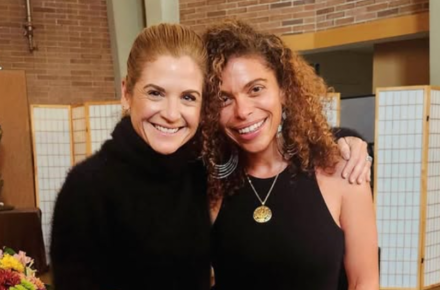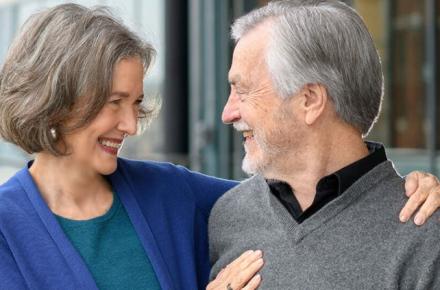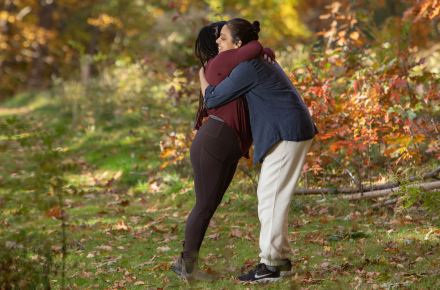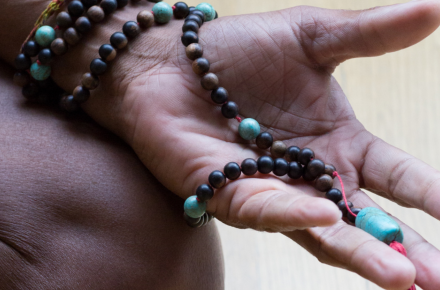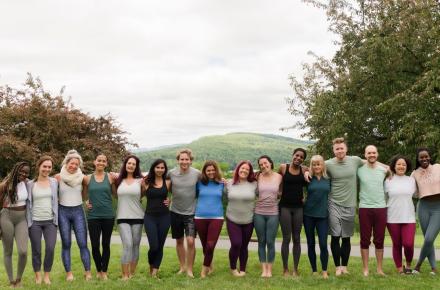Twinship: The Thrill of Reciprocity


In his newly released book Deep Human Connection, Kripalu presenter and Scholar Emeritus Stephen Cope draws vivid pictures of the five kinds of deep human connections necessary for full human development. These are, as Stephen describes them, Containment, Twinship, Adversity, Mirroring, and Conscious Partnership. In this brief excerpt, he takes a deep dive into some of the chief clinical characteristics of Twinship, using his own best friend from college days, Seth, as a model.
***
Seth was an altogether new kind of friend for me. Why did he feel so familiar—as if I’d always known him? Why did I feel safe with him, safe in a way I’d never felt before? Why did I prefer his company to everyone else’s? How was it that everything was absolutely okay if we were just hanging out?
Life with Seth was almost always fun—or at least intense. Our friendship bridged a divide that seemed to exist for me with every other person in the world—a divide I didn’t even know existed until I met Seth. Sometimes his mere presence—and whatever magic happened between us—made me feel wild, unshackled from my WASP restraint, reckless, the risk taker I had never been.
With the perspective of time, I can see that I felt compelled to know Seth. That’s all. Simply, to know him. In fact, to know everything about him. And I urgently wanted him to know me.
Was I falling in love? Yes, of course I was. But not at all in the way that we usually mean that phrase. Indeed, the idea of “falling in love” never crossed my mind that summer. If there was sexual attraction, it never became conscious. It was buried under another even more powerful form of attraction—a deep ardency in friendship that I had never before experienced.
What was this exotic new animal?
It was simply this: a best friend.
***
Best friends. What are they?
By this point in our young lives (ah, adolescence!), we have hopefully experienced some “good enough” moments of attunement, alignment, and resonance in our relationships with containers. Most importantly, as I have said, we have had the experience of feeling safely held and soothed, and feeling felt. We have laid the groundwork for some new magic.
Then, with the best friend—with Seth—comes something new: Not only do I feel felt by Seth, but I feel him. And he feels felt. And I feel him feeling felt. This is, for an adolescent, something altogether revelatory: A symmetrical relationship. This intense new form of relationship will call forth entirely new parts of our self. And once we fully experience these parts, we will never be the same.
How does this happen?
Well, throughout our childhood and adolescence, we have had fascinations with others—fascinations, I mean, with peers. And occasionally, but not often, this other with whom we are fascinated is also fascinated with us. Now the magic really begins. We have found a friend who wants to know us. Who needs to know us. Who seems, amazingly, as interested in our story as we are in his.
Whatever we call it, this new kind of intensely reciprocal relationship is an engrossing experience. We feel almost mystically drawn to this important new other. There is some new kind of exchange here—a heady new exchange of energy and information.
Philosophers, poets, and writers have studied this kind of friendship since pretty much forever, I suppose, because it is one of the most powerful experiences in human life. Plato. Gibran. Shakespeare. The Buddha. Kabir. The authors of the Bhagavad Gita. Of the Bible. To a one, these writers and thinkers have understood that “best friends” are a launching pad for our highest spiritual aspirations.
The Buddha, when asked by his own best friend, Ananda, if friends are an important part of the spiritual life, replied, “They are not just a part of the spiritual life, Ananda. They are the whole of the spiritual life.”
Today, unfortunately, we all too often tend to miss the profundity of these friendships. We might say laughingly—and with some slight edge of embarrassment—that Seth and I were having a “bromance.” Cool. Something to laugh about. As if it weren’t one of the most important things in the world.
***
Dr. Heinz Kohut called the magic of what I was experiencing with Seth “twinship.” This term is incisive. It goes right to the heart of the matter. The essence of twinship, Kohut tells us over and over again, is the deep human need to experience the essential likeness of an important other.
The essential likeness. Kohut emphasizes the main point: twinship is the discovery at depth of another human being who seems to have remarkably similar insides to our own. This very similarity raises the possibility that we could be known. Heretofore, a part of us has been—has seemed, has felt—to some extent incognito, cut off, unknowable by “the other.” Now, the discovery of inner sameness helps us to feel safe in a new way. We are not alone. How wonderful it is to find that there is another of our exact species on the planet. And in our own neighborhood! We have a friend in the world who knows who we are. (Cosmologists early in the twentieth century used to say that we cannot truly understand the universe because there is apparently only one of them—only one universe, that is. It turns out that, in the view of these cosmologists, it is impossible to have any perspective at all on any creation of which there is only one iteration. So too, human beings. In other words: I could not understand myself without Seth.)
At its core, then, twinship signals a deep new sense of belonging to the human race. Twinship is the very embryo—the earliest seed—of what most spiritual traditions call “oneness,” or “union.” Hinduism’s great spiritual masterpiece, the Bhagavad Gita, calls this “the vision of sameness.” Another great spiritual classic, the two-thousand-year-old Yoga Sutra, says, “We are all made of the same stuff.” Whatever we call it, most spiritual traditions see the mature experience of sameness as one of the highest forms of human consciousness. It presages the discovery that all human beings are essentially alike in every way that really counts.
And it all begins with that first truly reciprocal friendship. That first experience of sameness.
***
Have you had a twinship experience? If you have, you will never forget it. True experiences of twinship are precious, and we only experience them a handful of times throughout life—if we’re lucky. I remember my father’s best friend, Phil Shipe—the football coach at the College of Wooster, where my father was a dean. Phil and my father hung out together; they played golf; they watched sports on TV; they had deep talks about philosophy and politics; they had late-into-the-night talks about college politics. I remember, as a kid, observing this friendship with fascination. It seemed so very important to Dad. Phil gave my father a copy of Khalil Gibran’s The Prophet with an inscription: “To my best friend, Bob. A pearl of great price.”
Best friend. It’s such a loaded phrase. Do you remember the first time that you dared acknowledge to another human being that he or she was your best friend? That moment is just as terrifying, and just as wonderful, as the first time you say “I love you” to someone.
But have you noticed? “Best friend” is a phrase from a sacred language that we all seem to know. We all know well enough not to abuse it, don’t we? Those of us who have no problem taking the Lord’s name in vain will not take these five words in vain: “You are my best friend.” I guarantee it. Indeed, I will wager that most often the truth of best friendship is so deep, so sublime, that it cannot even really be spoken.
By the end of our first summer together, Seth and I might have called each other “blood brothers.” We might well have taken out a pocketknife and sliced our fingers open and shared blood and sworn allegiance: Best friends forever!
We did not slice fingers, by the way. But we nonetheless knew in our hearts what was happening.
***
The need for twinship will be with us for life. But if you think about your own history of twinship, I think you will see that such friendships will arise most urgently for us during times of deep reorganization of self. And, of course, adolescence stands as the first of these experiences of reorganization and reinvention. And so, for most of us, adolescence will be the crucible par excellence of twinship, and inevitably the model for later times of twinship and self-reorganization.
Do you remember what it was like for you? That first experience of twinship?
Find out about programs with Stephen Cope at Kripalu.
Excerpted from DEEP HUMAN CONNECTION, newly out in paperback with Hay House (March 2019), by permission of the author, Stephen C Cope.





